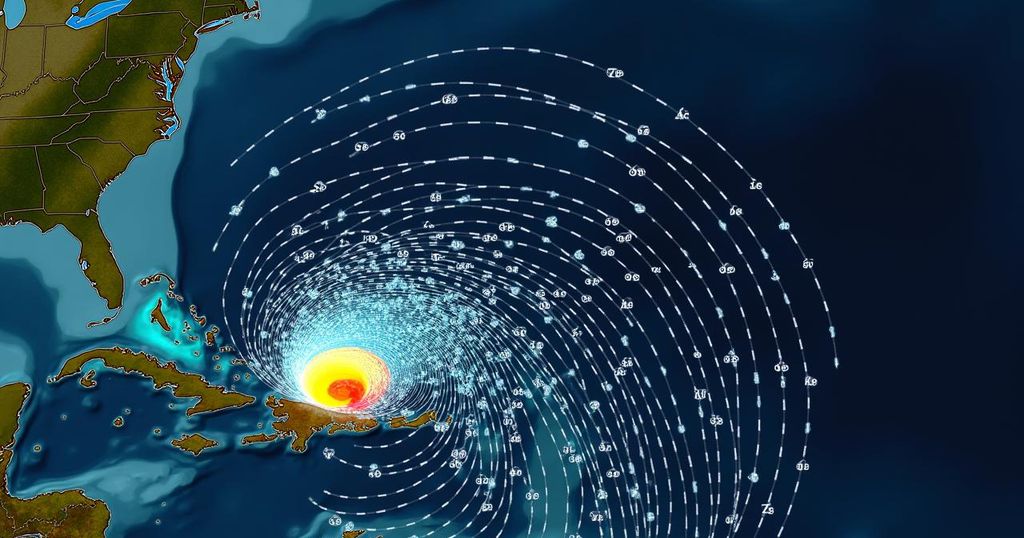Hurricane Milton: Tracking the Latest Storm Threat in the Gulf of Mexico
Hurricane Milton is a Category 4 storm poised to make landfall in western Florida, following the recent devastation caused by Hurricane Helene. With forecasts indicating heavy rain and storm surge, potential flooding is a major concern. The current hurricane season is projected to be one of the most active in years, raising alarms for affected regions.
Hurricane Milton has emerged as a significant weather event in the Gulf of Mexico, currently classified as a Category 4 hurricane, having been downgraded from Category 5 overnight. According to forecasts, Hurricane Milton is expected to make landfall in the western regions of the Florida peninsula, bringing with it hazardous weather conditions including heavy rainfall, coastal surge, and damaging winds. The potential impact of Hurricane Milton is considerable, as the serious effects may extend far beyond the area of landfall. The National Hurricane Center has predicted a likelihood of flooding in Florida, exacerbated by continued heavy rainfall leading up to Milton’s arrival on Wednesday. If Milton follows its anticipated course, it will mark the second hurricane to strike Florida within a two-week period, following Hurricane Helene, which also made landfall as a Category 4 hurricane, resulting in record storm surges and over 220 fatalities from Florida to Virginia. Hurricanes form and intensify when tropical cyclones in the Atlantic Ocean acquire the necessary environmental conditions for strength. Meteorologists monitor wind speeds closely; a storm is categorized as a tropical storm once it reaches speeds of 39 mph, and it is designated as a hurricane once it achieves a wind speed of 74 mph or above. These classifications are crucial for making predictions regarding potential risks and associated damages, along with issuing timely warnings to the public about the dangers of strong winds, rain, and floods. The effects of hurricane-force winds can be devastating, capable of destruction to homes and infrastructure, along with the risk of airborne debris. Moreover, winds can drive seawater inland, leading to severe storm surge—a leading contributor to hurricane-related fatalities in the United States. As hurricanes progress inland, flooding becomes an increasingly pressing concern, with storms typically unleashing over six inches of rain, overwhelming drainage systems and leading to flash floods that may persist long after the hurricane has passed. Historically, the hurricane season peaks around mid-September, and this year could potentially see one of the most active seasons in decades. The National Oceanic and Atmospheric Administration (NOAA) forecasts a total of 17 to 25 tropical storms, with an anticipated four to seven of those evolving into major hurricanes.
The formation and impact of hurricanes, such as Hurricane Milton, are critical areas of study in meteorology and public safety. In the Atlantic region, hurricanes are classified based on wind speeds, which help determine their potential destructiveness. Understanding the mechanics of hurricanes, including the phenomena of storm surges and flooding, is essential for preparedness and response efforts. The recent activity of hurricanes, particularly Helene, has underscored the importance of these classifications and monitoring, as well as the deadly consequences that can arise from such natural disasters.
In summary, Hurricane Milton represents a severe weather threat to the Gulf of Mexico and the western Florida peninsula, with the potential for damaging impacts from high winds, storm surge, and flooding. It is essential for residents in the projected impact zone to remain vigilant and stay informed about evolving conditions. The trends of increased hurricane activity highlight the necessity for preparedness as we progress through this historically active hurricane season.
Original Source: www.washingtonpost.com




Post Comment